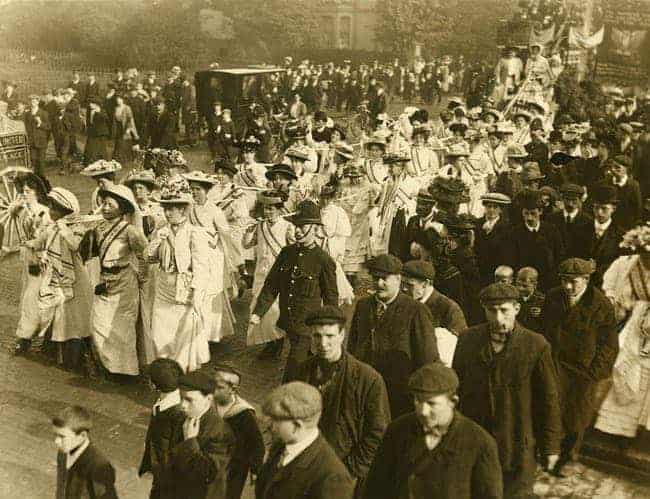Thinking about suffragettes likely evokes images of women in the 1910s in white dresses peacefully holding signs with slogans like “Votes for Women.” However, suffragists in early 20th century England were anything but peaceful. Their tactics often included vandalism, public demonstrations, and hunger strikes, and they were frequently arrested. Due to brutal treatment at the hands of the police, the suffragists began to train in martial arts in order to defend themselves. They eventually came to call their style of martial arts “suffrajitsu” in a nod to the suffrage movement’s name.
England had a different and longer path to the women’s vote than the United States. English women were granted the right to vote in local council elections in the 1880s, but still lacked the national right to vote. To fight for this right, activist Emmeline Pankhurst founded The Women’s Social and Political Union (WSPU) in 1903. The WSPU was a women-only organization. She established a previous co-ed organization, the Women’s Franchise League (WFL) with her husband, Richard Pankhurst, a liberal lawyer who also fought for women’s right to vote. These two organizations used diverse tactics, including their newly acquired suffrajitsu, to fight for the right to vote.

A photo of Emmeline Pankhurst addressing a crowd. BBC Radio
The WSPU and Other Suffragist Organizations
In the late 19th Century, there were 17 officially recognized groups dedicated to achieving women’s suffrage. They came together under one umbrella organization: the National Union of Women’s Suffrage Societies, or NUWSS, in 1887 or 1888. The NUWSS was led by Millicent Fawcett starting in 1890. They were a non-violent organization that attempted to bring about suffrage through constitutional methods. Fawcett believed that any form of violent protest was counter-productive and preached a civil approach. As the 19th century came to a close, suffragists began to believe that a strictly non-violent constitutional approach was not working, which is where the WSPU steps in.

